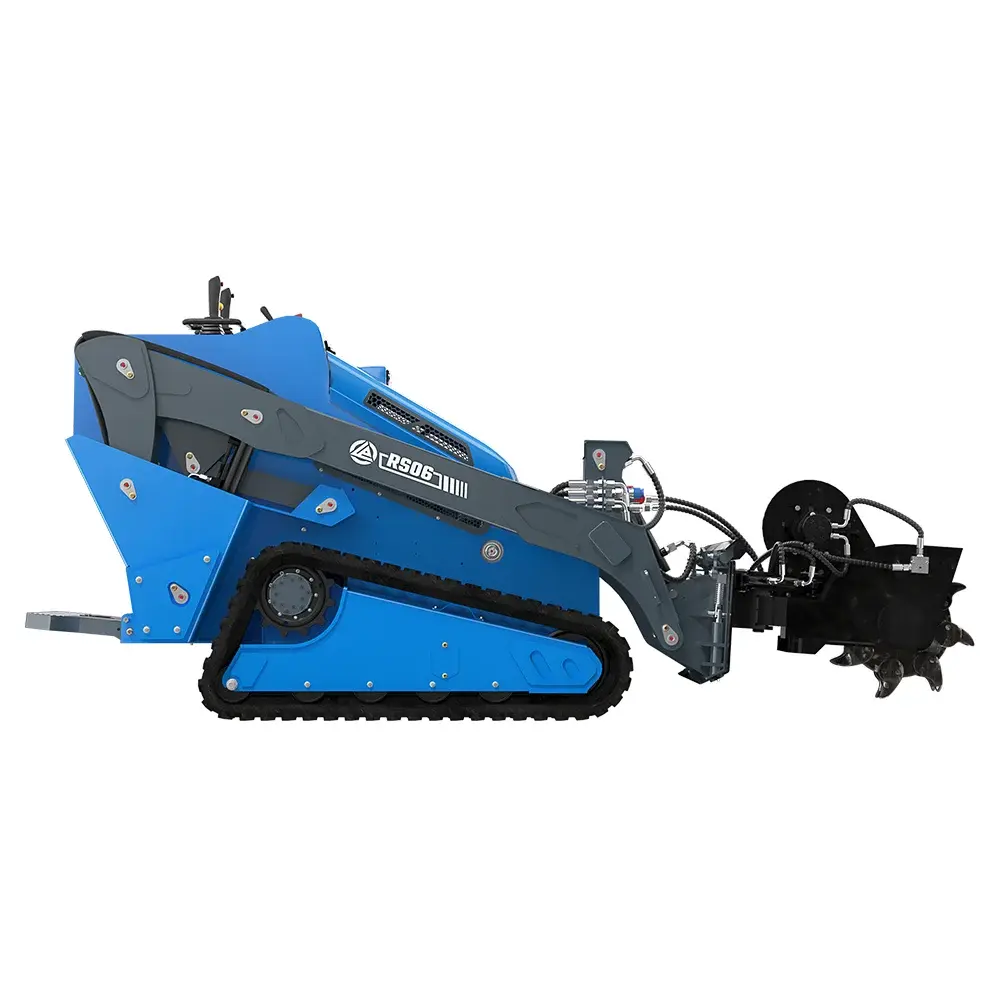Νοέ 18, 2025
Purchasing a mini skid steer loader is a long-term decision that impacts your productivity, operational costs, and overall project efficiency. Whether you are a first-time buyer or upgrading your compact equipment, carefully evaluating your needs will help you choose the right model and avoid unnecessary expenses down the road. Below are the key points to consider before investing in a mini skid steer loader.

One of the first questions to ask is: How often will the machine be in operation?
Understanding your daily or weekly workload helps determine the most suitable power source.
Gasoline engines generally have a lower purchase price and work well for part-time or occasional use.
Diesel engines, although more costly upfront, deliver better long-term value for businesses running their loader for extended hours. They typically offer greater fuel efficiency, longevity, and durability under heavy workloads.
If your work involves continuous operation or demanding tasks, choosing a diesel mini skid steer often reduces your total cost of ownership.
Mini skid steer loaders are widely used in areas where maneuverability is a priority—residential sites, tight backyard spaces, indoor demolition, landscaping, or narrow urban blocks.
Before selecting a model, evaluate:
Gate or fence clearance
Building entrances or interior pathways
Tight jobsite corridors
Industry-specific access limits
Choosing a loader with the appropriate width ensures smooth operation without needing to modify the site or remove obstacles. Compact models are especially ideal for landscaping, fencing, pool installation, and small-scale construction.

Transporting your mini skid steer loader safely and efficiently is another factor that directly affects your workflow.
Consider:
The towing capacity of your vehicle
The type and size of your trailer
How many attachments you need to carry
Lightweight trailers are suitable for compact loaders and essential attachments like trenchers, augers, or 4-in-1 buckets. For businesses with heavier towing vehicles or trucks, a larger trailer may allow you to transport more tools in one trip.
Ensuring your loader fits within your towing limits saves time, fuel, and transportation costs.
Different terrains require different undercarriage systems. Understanding the jobsite conditions helps you choose the best configuration:
Versatile and ideal for most general applications
Suitable for firm soil, pavement, and landscaping
Offers faster travel speeds and lower surface damage
Excellent traction in mud, sand, and wet environments
Reduces ground disturbance on soft surfaces
Recommended for rainy climates or unstable terrain
Additionally, if you choose a wheeled loader, several tire types are available to enhance performance in specific ground conditions.

While the purchase price is important, the true value of a mini skid steer loader is revealed over years of use. Consider factors such as:
Αποδοτικότητα καυσίμου
Maintenance costs
Component durability
Availability of replacement parts
Manufacturer support and after-sales service
Resale value
A reliable service network and easy-to-maintain design can significantly reduce downtime and operating expenses. A low upfront cost is not always the best choice if the machine requires frequent repairs or has limited support.
Selecting the right mini skid steer loader requires evaluating your working environment, operational intensity, transportation needs, and long-term maintenance expectations. By considering these factors carefully, you can invest in a machine that enhances productivity, delivers consistent performance, and offers excellent value throughout its lifespan.
If you need personalized guidance on choosing the right loader or want to compare model options, feel free to reach out to your preferred equipment supplier or manufacturer for expert assistance.